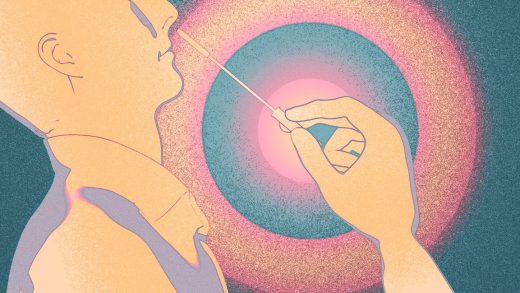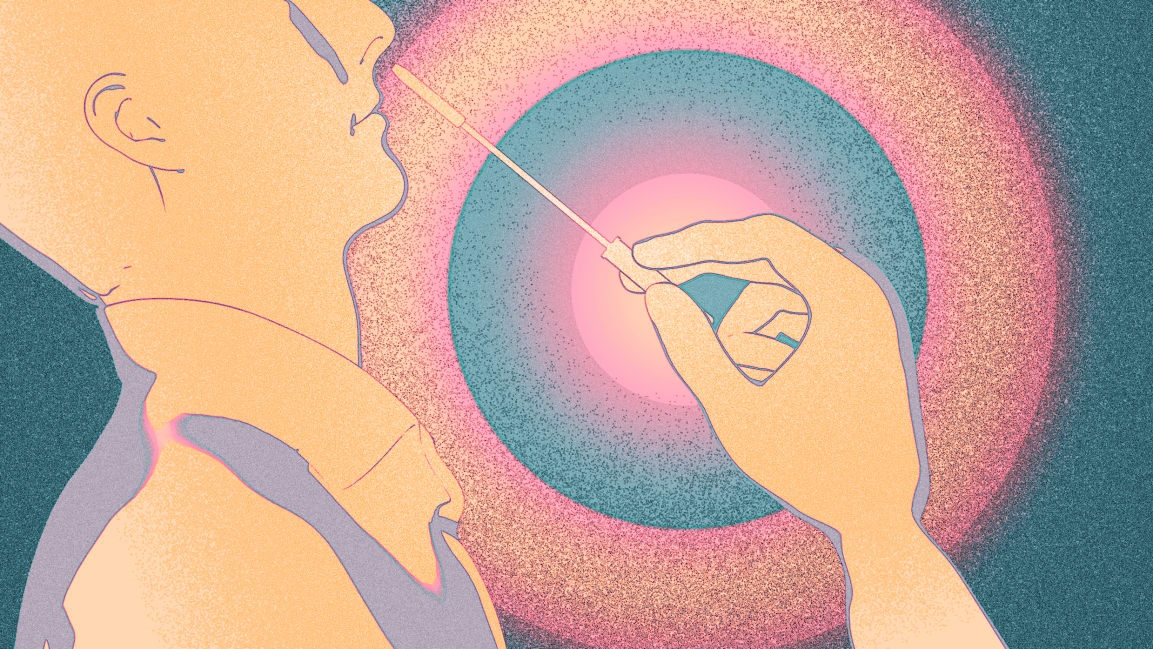How COVID tests are becoming a lot less uncomfortable—and safer for nurses
If you haven’t been tested for COVID-19 yet, there’s a good chance you will be at some point this year. As cases continue to grow, the U.S. is testing around 500,000 people a day. Luckily, the experience now may more pleasant—and safer for healthcare workers—than the first tests, which used giant swabs that are pushed through the nose to the back of the throat, twisted around to collect a sample, and pulled out, in a process than some people have described as feeling like being poked in the brain.
Those five-inch-long “nasopharyngeal swabs,” which reach the area where someone’s nasal passages connect with their mouth, are not only deeply uncomfortable—they added to the early problems around testing. That process often makes people cough or gag, increasing the risk that a healthcare worker trying to collect a sample may get sprayed with germs, and leading to even more shortages in protective equipment like masks, gowns, and gloves, as nurses have to continually change their PPE with each test. Shortages of the swabs also slowed down the rate of testing as the outbreak began spreading in the U.S.
In March, as the virus was spreading in Seattle, a researcher named Yuan-Po Tu at UnitedHealth Group, the healthcare and insurance company that runs a large network of clinics called OptumCare, quickly recognized the problem. “When COVID hit Seattle hard, he called me and said ‘We’re running into serious issues, and we’re going through 2.2 sets of PPE per patient,’” says Deneen Vojta, executive vice president of global research and development at UnitedHealth Group. “Because [with nasopharyngeal swabs] everyone reacts some way: They cough, or they sneeze, or it doesn’t work and they have to redo it. They get bloody noses. He said, ‘It doesn’t have to be this way.’”
Tu questioned why the standard method was necessary: Could a shorter nasal swab, inserted only partway into the nose, also collect a sample that could be effectively tested? Could a patient collect a sample themselves, better protecting healthcare workers? The UnitedHealth Group team quickly launched a study with more than 500 patients in the Seattle area, asking patients to collect samples themselves from the lower nasal area, a middle region in the nose, and the tongue, and then compared the test results with the standard nasopharynx test.
The alternative methods worked. Samples from the lower part of the nose had a 94% accuracy, and mid-nose samples had a 96.2% accuracy. (Nasopharyngeal swab tests have a reported 98% sensitivity; the higher the sensitivity, the fewer false negative results.) In a couple of cases, the collection method worked better than the supposed gold standard—the sample from the nasopharyngeal swab came back negative, but the other tests showed that patient did have COVID-19. “There’s no perfect collection method, but what we showed was equivalency,” says Vojta.
The team worked with the University of Washington and Quest Diagnostics on the study, with technical support from the Gates Foundation, which also helped usher the data from the study through the FDA. By late March, the FDA had issued new guidance saying that self-administered tests with shorter swabs could be used in COVID testing.
In April, based on further data from the researchers, the FDA said that polyester swabs could be used for the process, which can be manufactured more quickly than the foam swabs that were initially used, and stored in normal saline rather than the specific formula that was initially used to transport foam swabs to labs. In May, data from Quantigen showed that it’s possible to transport samples in a dry tube and have them stay stable for as long as three days—meaning that someone who thinks they might have COVID could take a sample at home and then send it to a lab, avoiding the further spread of the virus that might happen if they went to a clinic or test site instead.
In June, the results of the study were published in the New England Journal of Medicine. The new methods aren’t yet universally used, but they’re becoming more popular. Some clinics have continued with the older method out of habit, Vojta says, while others may be using up their existing stock of the longer swabs. It also took time for labs to accept the new collection method, although she says that most do now. Already, many drive-through test sites now let people collect samples themselves, and home test providers, like Let’sGetChecked, use the short lower nasal swabs. The longer, more uncomfortable swabs may continue to become less common, which is good news for both healthcare workers and the people being tested. Votja can personally attest to at least one part of that; through her work on the research and development team, she tried a nasopharyngeal test herself. “It was awful,” she says. “It’s torture.”
(34)



